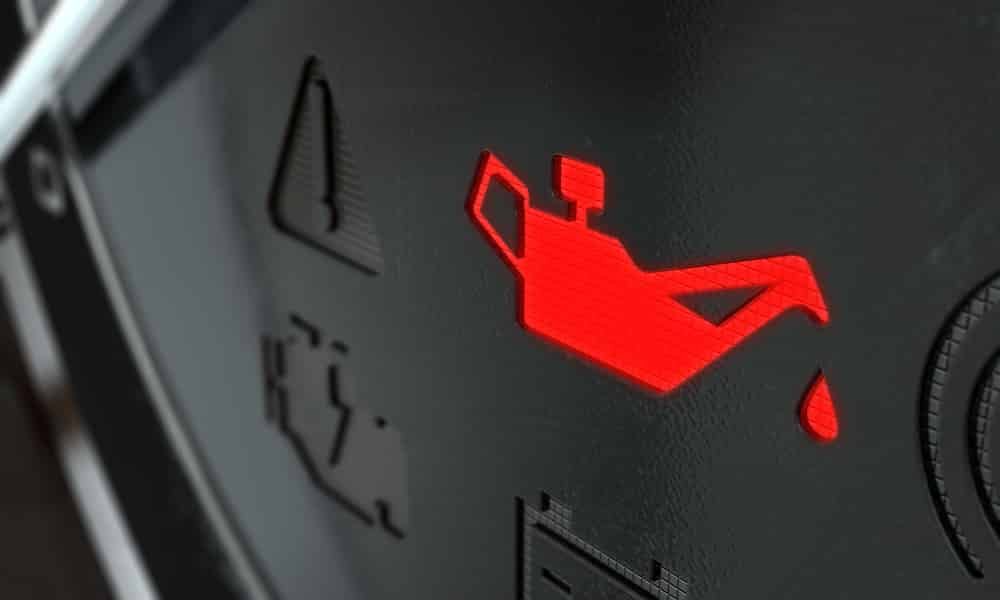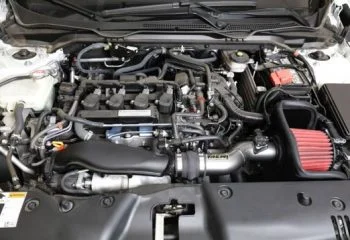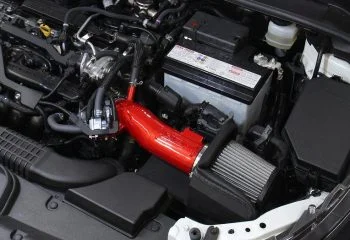In the automotive world, an oil light is a warning light typically found on the dashboard that indicates low oil pressure in the engine.
When this light illuminates, it is important to take your car to a mechanic as soon as possible, as low oil pressure can cause extensive damage to your engine.
However, there is a case when you driving and saw the oil light come on, but when you checked the dipstick it read that the oil was still full.
This happens to a lot of people and it can be confusing. In this post, we’ll explain why the oil light comes on and off but oil is full. We’ll also offer some tips for avoiding this issue. Keep reading to learn more!
What's in this post?
Why oil light comes on and off but oil is full?
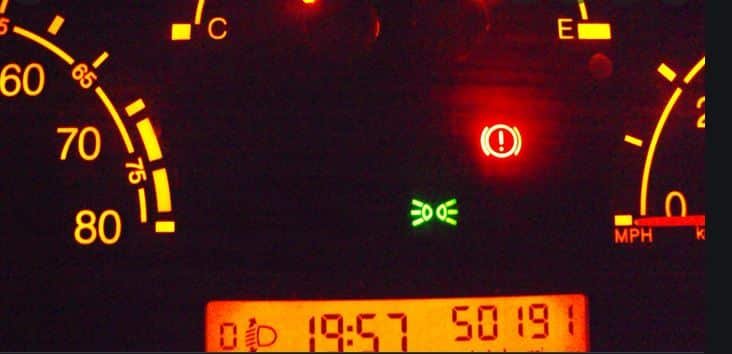
There are a few reasons why this might happen:
- A faulty oil pressure sensor
- Dirty or old oil
- An issue with the wiring
- A problem with the oil pump
- Low oil pressure
Let’s dive into each of these reasons in more detail.
A Faulty Oil Pressure Sensor
One of the most common reasons why the oil light comes on and off is because of a faulty oil pressure sensor. Over time, these sensors can become damaged or contaminated, which causes them to give inaccurate readings.
When this happens, the computer may interpret the low readings as an indication that there is not enough oil in the engine, even if there is plenty. As a result, it will turn on the oil light.
Dirty or old oil
Another common reason for the oil light to come on is dirty or old oil. When oil gets older, it breaks down and becomes less effective at lubricating the engine. This can cause the oil pressure to drop, even if there is enough oil in the system.
Likewise, if your oil is very dirty, it may not be able to flow properly through the engine. This can also lead to low oil pressure and trigger the oil light.
An Issue with the wiring
In some cases, an issue with the wiring can cause the oil light to come on and off. If there are any loose connections or frayed wires, it could affect how the sensor reads the oil pressure. As a result, you may see the light turn on and off even though the oil level is full.
A Problem with the oil pump
Another potential cause of low oil pressure is a problem with the oil pump. This pump is responsible for circulating oil throughout the engine, and if it isn’t working properly, the oil pressure will drop.
This can be caused by a number of things, such as a blockage in the pump or a broken drive shaft. Regardless of the reason, a malfunctioning oil pump can trigger the oil light.
Low oil pressure
Finally, it’s worth mentioning that low oil pressure can also cause the oil light to come on, even if there is enough oil in the system.
There are a number of reasons why the oil pressure might be low, such as a problem with the oil pump or dirty/old oil. However, in some cases, it may simply be because the engine is cold.
If you start your car and the oil light comes on, give it a few minutes to warm up before checking the dipstick. In most cases, the light will go off once the oil has had a chance to circulate.
How to diagnose the issue?
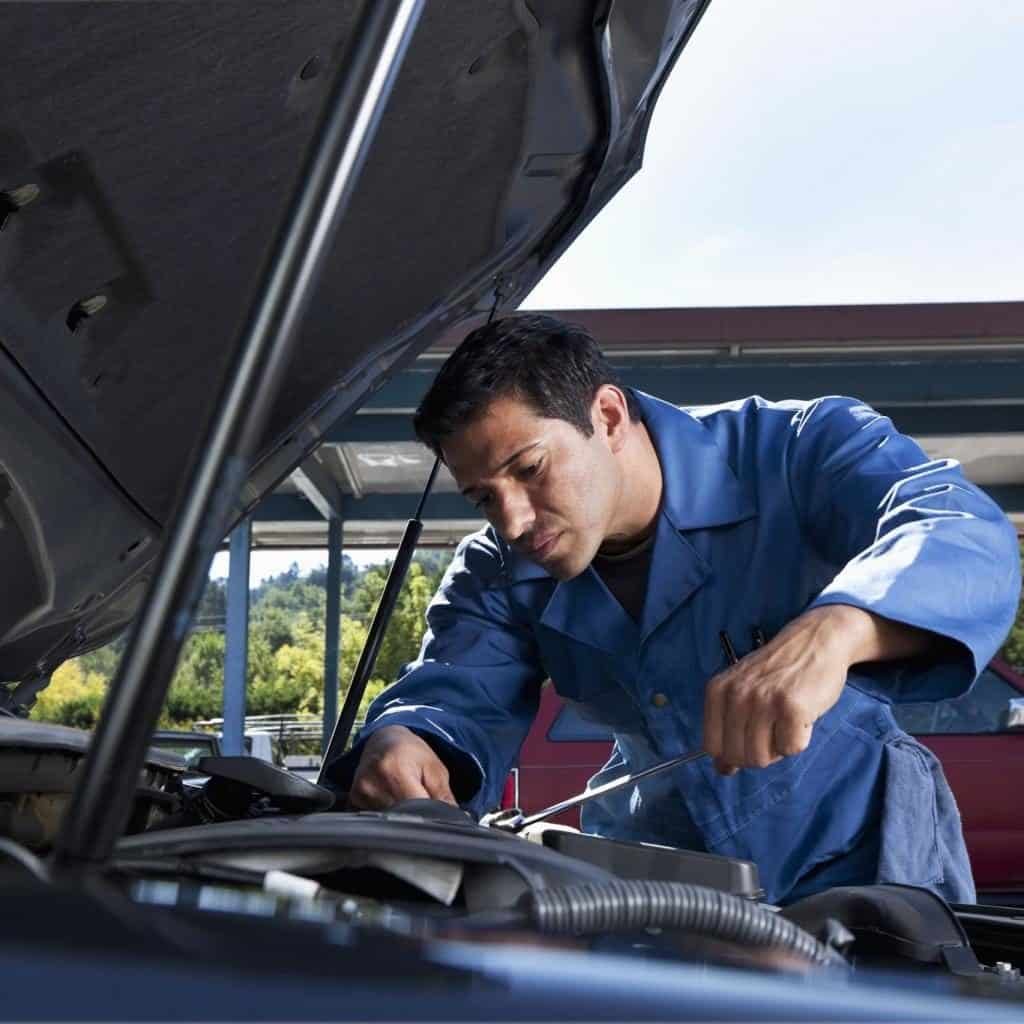
If your oil light is coming on and off, the first thing you should do is check the oil level. If it’s low, add more oil and see if the light goes off. If the oil level is full, there are a few other things you can check
How do you check an oil pressure sensor?
- Checking the oil pressure sensor is a relatively simple task that can be done with a multimeter. Locate the sensor on the engine. It will typically be located near the oil filter or oil pan. (See How to Clean Oil Pan After Oil Change)
- Next, remove the electrical connector from the sensor.
- Once the connector is removed, you can use the multimeter to test the sensor by touching the multimeter’s probes to the two terminals on the sensor.
- The multimeter should register a reading in volts; if no reading is displayed, then the sensor is faulty and needs to be replaced.
How do you check an oil pump?
The oil pump in a car is responsible for making sure the engine has the right amount of oil pressure. This is vital to keeping the engine running smoothly and preventing damage. There are a few different ways to check the oil pump.
One is to use an oil pressure gauge. This can be done by starting the engine and letting it idle for a few minutes. Then, the gauge should be checked to see if it is reading in the normal range. If it is not, then there may be an issue with the oil pump.
Another way to check the oil pump is to listen for any unusual noises coming from the engine area. If any strange noises are heard, then it is possible that the oil pump is not working correctly.
How to check wiring?
If you suspect that an issue with the wiring is causing the oil light to come on, the first thing you should do is check all of the connections. Make sure that they are all tight and secure.
If they are, then the next step is to check for any frayed or damaged wires. Any wires that are damaged will need to be replaced.
In some cases, it may be necessary to test the wiring with a multimeter. This can be done by disconnecting the wire from the sensor and testing it for continuity. If there is no continuity, then the wire will need to be replaced.
If you’re not comfortable diagnosing the issue yourself, we recommend taking your car to a mechanic. They will be able to run some tests and figure out what’s causing the problem.
How to check contaminated oil?
Luckily, there are a few simple ways to check if your engine oil is dirty. One way is to look at the oil dipstick. If the oil is black or dark brown, it may be time to change it.
Another way to check is to look for debris in the oil drain pan when you change the oil. If you see a lot of debris, that means the oil is not doing its job of cleaning the engine parts anymore.
Finally, you can take your car to a mechanic and have them do a professional inspection. They will be able to tell you for sure if your engine oil is dirty and needs to be changed.
If you’re not comfortable diagnosing the issue yourself, we recommend taking your car to a mechanic. They will be able to run some tests and figure out what’s causing the problem.
How to check oil pressure?
Checking your vehicle’s oil pressure is a simple and important task that every driver should know how to do. The oil pressure tells you how well the oil is circulating through the engine. If the pressure is too low, it can mean that the oil isn’t reaching all of the engine’s parts, which can lead to premature wear.
- To check your oil pressure, start by locating the gauge on the dashboard. In most vehicles, it will be located in the center of the dash, near the speedometer.
- Once you’ve found the gauge, turn on the engine and let it idle for a few minutes. This will give the oil time to warm up and circulate properly.
- Then, use the gauge to check the pressure. If it’s within the normal range, then you’re good to go. However, if it’s below the normal range, you may need to add more oil or have your vehicle serviced.
If you’re not comfortable diagnosing the issue yourself, we recommend taking your car to a mechanic. They will be able to run some tests and figure out what’s causing the problem.
How to fix oil light comes on and off but oil is full?
If your oil light is coming on and off but the oil is full, there are a few things you can do to fix the problem:
- Change the oil
- Replace the oil pressure sensor
- Repair or replace the oil pump
- Fix any loose connections or frayed wires
- Try to reset the oil change light.
As we mentioned earlier, dirty or old oil is one of the most common reasons for this issue. If you haven’t changed your oil in a while, we recommend doing so as soon as possible. This will help improve the performance of your engine and may fix the problem.
Likewise, if the oil pressure sensor is damaged or contaminated, replacing it will likely solve the issue. In some cases, you may also need to repair or replace the oil pump.
Finally, if there are any loose connections or frayed wires, you’ll need to fix them as soon as possible. This will help ensure that the sensor is able to accurately read the oil pressure.
If you’re not comfortable performing these repairs yourself, we recommend taking your car to a mechanic. They will be able to diagnose and fix the problem quickly and efficiently.
How much does it cost to fix oil light blinking?
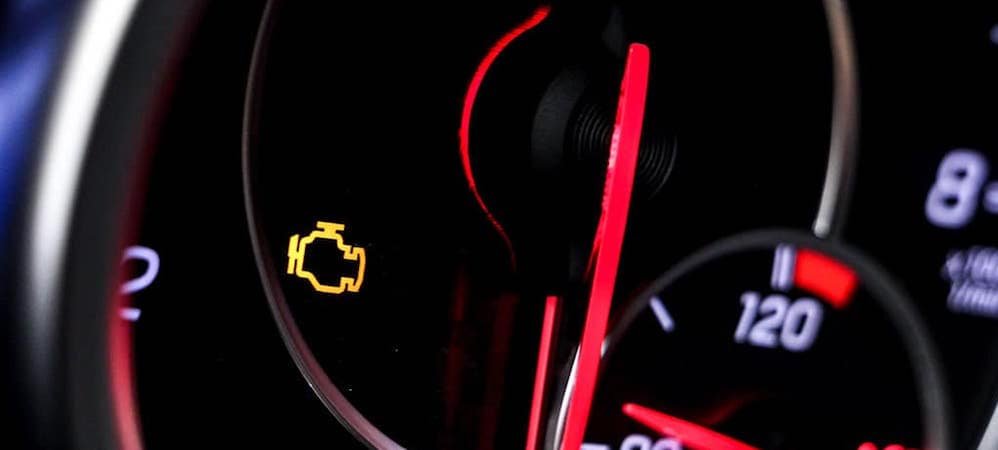
The cost of fixing an oil light that’s blinking will vary depending on the problem. For example, if you need to replace the oil pressure sensor, it will only cost around $120-$150.
However, if you need to repair or replace the oil pump, the cost will be much higher. In most cases, it will be somewhere between $300 and $2,500.
Finally, if there are any loose connections or frayed wires, you may be able to fix them yourself for free. However, if you’re not comfortable performing these repairs, we recommend taking your car to a mechanic.
How to prevent blinking oil light?
There are a few things you can do to prevent your oil light from blinking:
- Change your oil regularly
- Check the oil level regularly
- Replace the oil filter as needed
- Check the oil pressure sensor
- Clean the terminals and connections
As we’ve mentioned several times, one of the best ways to prevent this issue is to change your oil regularly. This will help ensure that your engine stays clean and lubricated.
Likewise, it’s important to check the oil level on a regular basis. This will help you catch any leaks or problems before they cause serious damage.
If you have an older car, we also recommend replacing the oil filter as needed. This will help keep contaminants out of your engine.
Finally, it’s important to check the oil pressure sensor on a regular basis. This will help you ensure that it’s working properly. If it’s not, you may need to clean the terminals and connections.
If you follow these tips, you should be able to prevent your oil light from blinking.
FAQs about oil light blinking even oil is full
Can a clogged oil filter cause oil light to come on?
If your oil filter becomes clogged, it can cause your oil light to come on. The oil light is an indicator that there is not enough oil pressure in the engine, which can be caused by a clogged filter.
When the filter becomes clogged, it restricts the flow of oil to the engine, causing the oil pressure to drop. If the oil pressure gets too low, it can damage the engine.
For this reason, it’s important to check your oil filter regularly and replace it if it becomes clogged. If your oil light comes on, you should check your filter and replace it if necessary.
How do I check oil pressure manually?
Before you start your engine, it’s important to check your oil pressure. This can be done manually with a mechanical gauge or by using an electronic sensor. If you’re using a mechanical gauge, screw it into the oil port on the engine block.
Start the engine and let it idle for a few minutes. The gauge should read between 20 and 40 psi. If it’s low, shut off the engine and check for leaks. If you don’t see any leaks, add oil until the level is correct. If you’re using an electronic sensor, connect the negative lead to the battery ground and the positive lead to the oil pressure sender.
Start the engine and check the reading on the sensor. It should be between 2 and 4 volts. If it’s outside this range, shut off the engine and check for leaks or other issues. By regularly checking your oil pressure, you can help extend the life of your engine.
Can synthetic oil cause low oil pressure?
Synthetic oil is commonly used in today’s engines because it provides superior protection against wear and corrosion. However, some automakers warn that using synthetic oil can lead to low oil pressure.
The reasoning is that synthetic oil is thinner than conventional oil, so it may not provide sufficient lubrication for all of the engine’s moving parts. As a result, some automakers recommend sticking with conventional oil, especially if the engine is already showing signs of wear.
However, there are also synthetic oils that are designed specifically for high-mileage engines, so it’s worth doing some research to find the right oil for your car. Ultimately, whether or not to use synthetic oil is a personal decision, but it’s important to be aware of the potential risks before making a change.
Read more: Do Tesla need an oil change?
How can I tell if my oil pressure sensor is bad?
There are a few symptoms that can indicate a bad oil pressure sensor. One is if the engine oil light comes on when the car is first started. Another is if the oil pressure gauge in the car is reading lower than usual. If either of these things happens, it’s important to have the car checked by a mechanic as soon as possible, as a bad oil pressure sensor can lead to engine damage.
There are also a few simple tests that can be done to check the oil pressure sensor. One is to start the car and let it idle for a few minutes, then check the engine oil level. If it’s low, that could be an indication that the sensor is not working properly.
Another test is to rev the engine and see if the oil pressure gauge rises; if it doesn’t, that could also be an indication of a problem with the sensor. In any case, if you suspect your oil pressure sensor may be faulty, it’s best to have it checked by a professional.
Why does my oil light come on and off when I brake?
The oil light on your car is designed to come on when the engine oil pressure is low. This usually happens when the oil level is low, but it can also be caused by a problem with the oil pump or a blockage in the oil filter.
If the light comes on while you’re driving, it’s important to check the oil level as soon as possible. If it’s low, add more oil and see if the light goes out.
If the light continues to come on and off, even after adding oil, there may be a problem with the oil pump or filter. In this case, it’s best to take the car to a mechanic for further diagnosis.
How do I reset my oil sensor?
The oil life sensor is reset by starting the engine with the transmission in Neutral and depressing the brake pedal. With your foot still on the brake, shift the transmission into Drive and then back into Neutral. Finally, turn off the engine and wait a few seconds before restarting it.
Once the engine is running, the oil life sensor will be reset and you can continue with your journey. If you have any further questions, please consult your owner’s manual or contact your local dealership.
Final thoughts
The oil light comes on and off but oil is full is a common issue that drivers face. While it can be frustrating, there are some things you can do to troubleshoot the problem and hopefully get your car back on the road. The oil light comes on when there is a problem with the engine, not the oil itself.
You need to be proactive in maintaining your car, sometimes things happen that are out of your control. If your car’s oil light comes on, don’t panic. And not to ignore the light, it can cause some serious damage. So next time your oil light comes on, take a deep breath and follow these steps to get your car back up and running.
We hope this article has helped provide some answers to why your oil light comes on and off.
By following the manufacturer’s recommended maintenance schedule and keeping up with routine oil changes, you can help keep your car running smoothly for years to come.

